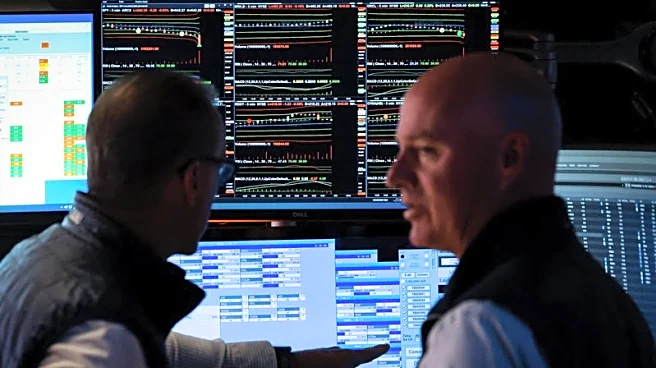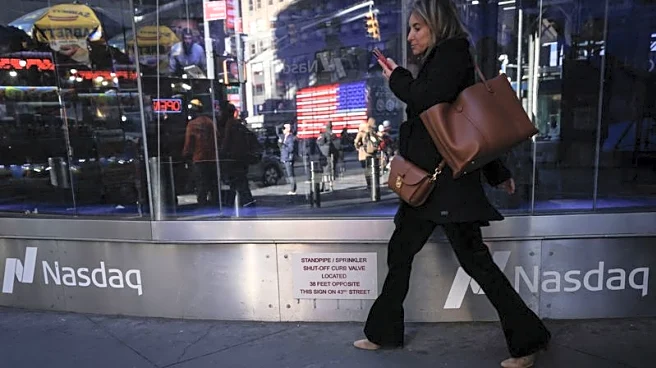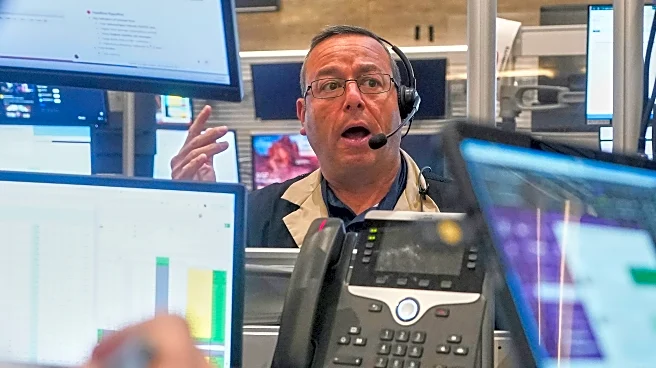By Nell Mackenzie
LONDON (Reuters) -Hedge funds remain hesitant about buying U.S. stocks at the outset of what is often a dour month for markets, even with a potential U.S. rate cut on the horizon, after becoming net sellers in August.
More traditional investors also sold more U.S. stock than they bought, Lipper data shows.
Although world stocks are near record highs, they could be vulnerable to sharp selloffs, and hedge funds have stayed out of the recent rally out of caution, bank research and investment
sources say.
Here's a look at what's behind their concern:
1/ STAYING QUIET
Hedge fund leverage, or borrowing, slipped again towards the end of August after a sharp reduction earlier in the month, a Goldman Sachs note tracking data to August 25 shows.
The S&P 500 closed August up almost 2% and remains near record highs, as does MSCI's world stock index.
But hedge funds did not participate in the August stocks rally, Goldman Sachs said, instead continuing to sell, "which points to a more cautious stance".
Leverage used for trades dropped 1% in the U.S. and Europe last week, according to a note by Morgan Stanley sent to clients and seen by Reuters on Monday, in a further sign that trading by hedge funds remained muted.
2/ SEASONAL RED FLAGS
U.S. stock markets have produced a negative return in September in around half of the last 20 years. Corporates, for regulatory reasons, are not allowed to repurchase their own stock that month.
Bruno Schneller, managing director at Erlen Capital Management, explained how systematic hedge fund risk limits might prohibit them from buying future dips:
"Seasonally, volatility tends to rise into autumn, and positioning in systematic strategies is already stretched — so the market has less shock-absorber capacity than usual."
3/ FRAGILITY
Porchester Capital CIO Omar Sayed said that with a U.S. Federal Reserve rate cut widely anticipated later in September, a sharp flight from stocks was unlikely - but dangers might lurk elsewhere.
A selloff that has pushed government bond yields in the likes of Japan and Britain to multi-year highs suggests market frailties elsewhere, the former Millennium portfolio manager said.
"If you look at the 30 years of gilts and JGBs (yield data), they are at new highs - and any crisis in one market will trigger a crisis in another," he said.
In August 2024, a global sell-off that roiled equity markets was triggered by a surprise Bank of Japan rate hike.
Japan's 30-year government bond yield is trading near recent record highs above 3%.
4/ VICIOUS CIRCLE OF SELLING
Direct U.S. equities holders now possess the highest amount ever, relative to their income, UBS's markets and trading desk said in a note to clients on Thursday.
It estimates that in 2025, direct holdings of retail stock will reach 265% of disposable income, compared to the previous high of 243%, in 2021.
These retail traders comprise just over 40% of the U.S. stock market.
This is a reason for caution because any signs of a sharp growth slowdown that prompts equity holders to reduce spending for speculative purposes might trigger a vicious circle of stock selling, noted Erlen Capital's Schneller.
"The retail bid is powerful but fragile — when multiples of disposable income are being funnelled into equities, it can extend the cycle, but it also raises the risk of a sharp unwind," he said.
5/ THAT CHINA TRADE
In the meantime, Chinese equities saw record net inflows in August, according to Goldman Sachs.
A Morgan Stanley note last week said August looked set to mark the biggest monthly buying spree of China shares by hedge funds since February.
(Reporting by Nell Mackenzie; Additional reporting by Summer Zhen. Editing by Dhara Ranasinghe and Kevin Liffey)













